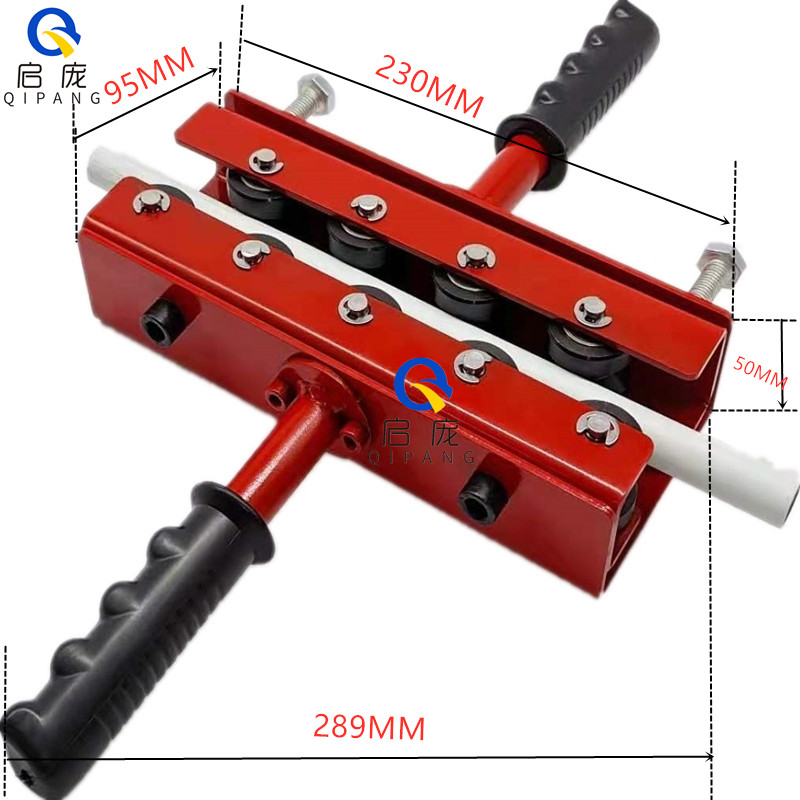- Automobiles & Motorcycles
- Beauty & Personal Care
- Business Services
- Chemicals
- Construction & Real Estate
- Consumer Electronics
- Electrical Equipment & Supplies
- Electronic Components & Supplies
- Energy
- Environment
- Excess Inventory
- Fashion Accessories
- Food & Beverage
- Furniture
- Gifts & Crafts
- Hardware
- Health & Medical
- Home & Garden
- Home Appliances
- Lights & Lighting
- Luggage, Bags & Cases
- Machinery
- Measurement & Analysis Instruments
- Mechanical Parts & Fabrication Services
- Minerals & Metallurgy
- Office & School Supplies
- Packaging & Printing
- Rubber & Plastics
- Security & Protection
- Service Equipment
- Shoes & Accessories
- Sports & Entertainment
- Telecommunications
- Textiles & Leather Products
- Timepieces, Jewelry, Eyewear
- Tools
- Toys & Hobbies
- Transportation
How does a pipe straightener work?
In various industries, the precision and quality of pipes are critical for seamless operations. Pipe straighteners play a pivotal role in achieving the desired straightness in pipes, ensuring they meet stringent standards.
**1. The Importance of Straight Pipes:
**a. Industrial Applications:
In industries such as oil and gas, automotive, construction, and manufacturing, straight pipes are essential for proper functioning of equipment, efficient flow of fluids, and structural integrity.
**b. Quality Standards:
Compliance with industry standards and specifications demands precise straightness in pipes to avoid complications during installation, reduce stress on equipment, and ensure optimal performance.
**2. Introduction to Pipe Straighteners:
**a. Definition:
A pipe straightener is a specialized machine designed to straighten pipes that may have undergone deformation during manufacturing, transportation, or storage.
**b. Types of Pipe Straighteners:
Various types of pipe straighteners exist, including roller-type straighteners, stretch straighteners, and rotary straighteners, each catering to specific applications and pipe sizes.
**3. Working Mechanism:
**a. Roller-Type Straighteners:
This type uses sets of rollers to gradually bend and straighten the pipe. The rollers are strategically positioned to apply force on the curved sections, progressively correcting the deformities.
**b. Stretch Straighteners:
Stretch straighteners utilize tension to elongate the pipe and subsequently remove bends and deformities. The process involves pulling the pipe through a series of gripper jaws, inducing controlled stretching to achieve straightness.
**c. Rotary Straighteners:
Rotary straighteners involve rotating discs or rollers arranged in a circular pattern. As the pipe passes through, these rotating elements apply bending forces to align and straighten the pipe.
**4. Key Components:
**a. Rollers or Grippers:
Further reading:What is the difference between a press brake and a bending machine?
How do I operate a large lathe?
What are the benefits of a WC67Y hydraulic press brake for sale?
Everything You Need to Know About LF3015GA: Specs, Uses & FAQs
How to Choose Conventional Lathe Machine? A Comprehensive Guide
10 Questions You Should Know about Fiber CNC Laser Machine Metal
4 Tips for Choosing a 15t Heavy Duty Horizontal Lathe MachineThe core components are the rollers or grippers that make direct contact with the pipe. These elements are strategically positioned to apply forces that counteract the existing deformities.
**b. Adjustment Mechanisms:
Many pipe straighteners feature adjustable settings to accommodate various pipe sizes and specifications. These adjustments ensure versatility in handling different types of pipes.
**c. Control Systems:
Modern pipe straighteners often incorporate advanced control systems to precisely manage the straightening process. These systems allow for automation, ensuring consistent and accurate results.
**5. Applications of Pipe Straighteners:
**a. Steel and Metal Industries:
Pipe straighteners are extensively used in the manufacturing of steel pipes and metal tubes where precise straightness is crucial for subsequent fabrication processes.
**b. Automotive Sector:
Straight pipes are essential components in automotive systems. Pipe straighteners contribute to achieving the required straightness in exhaust pipes, fuel lines, and other automotive tubes.
**c. Oil and Gas Pipelines:
In the oil and gas industry, where pipelines cover vast distances, maintaining straightness is vital. Pipe straighteners ensure the integrity and efficiency of these extensive pipeline systems.
**6. Challenges and Considerations:
**a. Material Properties:
The properties of the pipe material, including its elasticity and yield strength, influence the straightening process. Understanding these material characteristics is crucial for effective straightening.
**b. Precision Requirements:
Certain applications, such as those in aerospace or high-precision industries, demand extremely tight tolerances. Pipe straighteners must be capable of meeting these stringent requirements.
**7. Conclusion:
In the complex landscape of industrial applications, pipe straighteners emerge as indispensable tools for achieving the required precision in pipes. Whether in the manufacturing of steel tubes, automotive components, or oil and gas pipelines, these machines contribute significantly to the efficiency, safety, and reliability of various systems. By employing advanced technologies and precise control mechanisms, pipe straighteners continue to play a crucial role in shaping the infrastructure and technologies that drive our interconnected world.
Aluminum plastic pipe straightener machine
Further reading:Everything You Need to Know About Hydraulic Guillotine Shearing Machine
The Benefits of Using How Does a Wire Straightening Machine Work? - A Comprehensive Guide
4 Advice to Choose a Stating Machine
Maximize Efficiency with Bulk Steel Bar Straightening
What Are the Basics of Wire Straightening?
How Does Hydraulic Breaker Attachments Work?
4 Advice to Choose YUCHAI Mini Excavator Attachments
Next
None
Related Articles
If you are interested in sending in a Guest Blogger Submission,welcome to write for us!













Comments
0